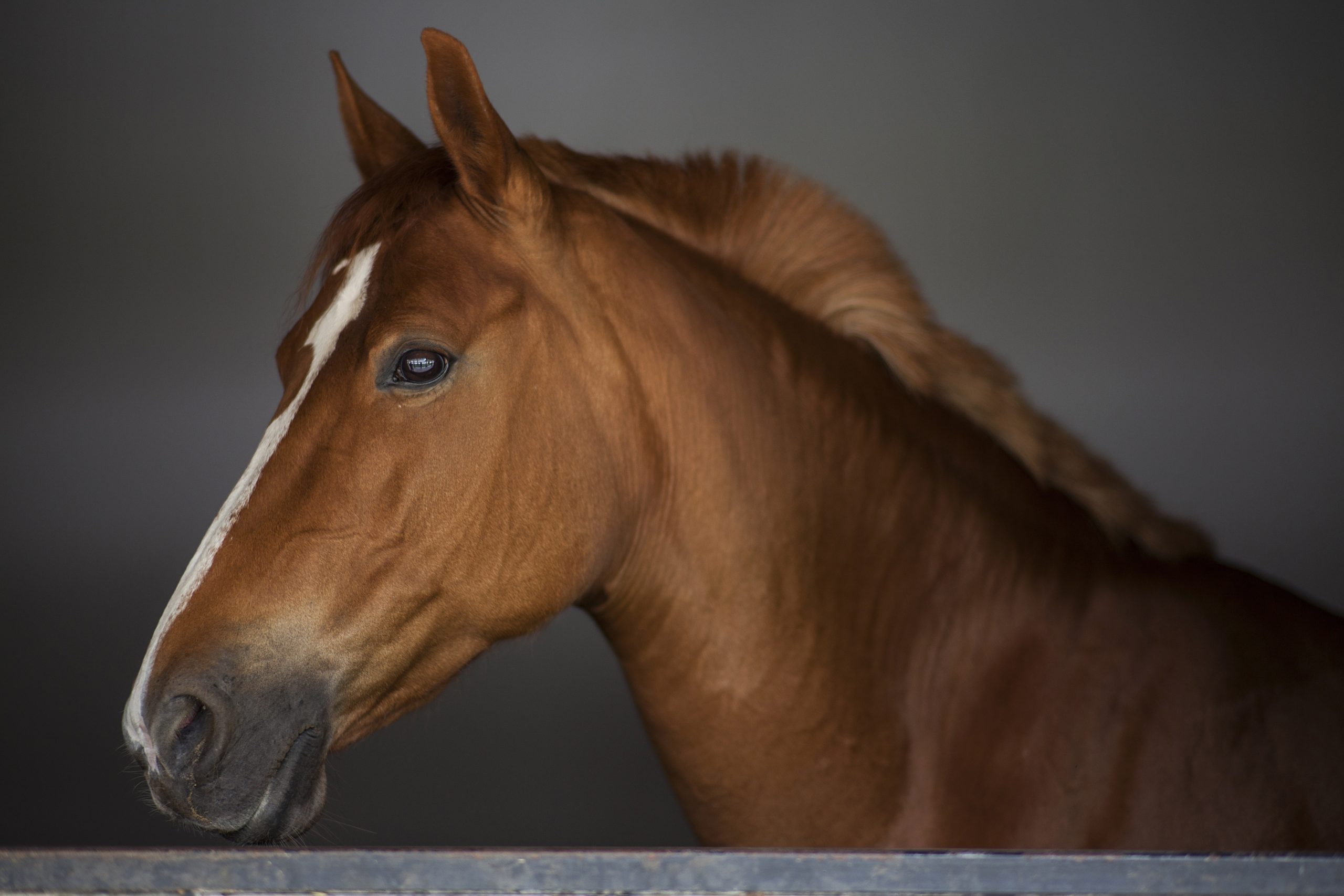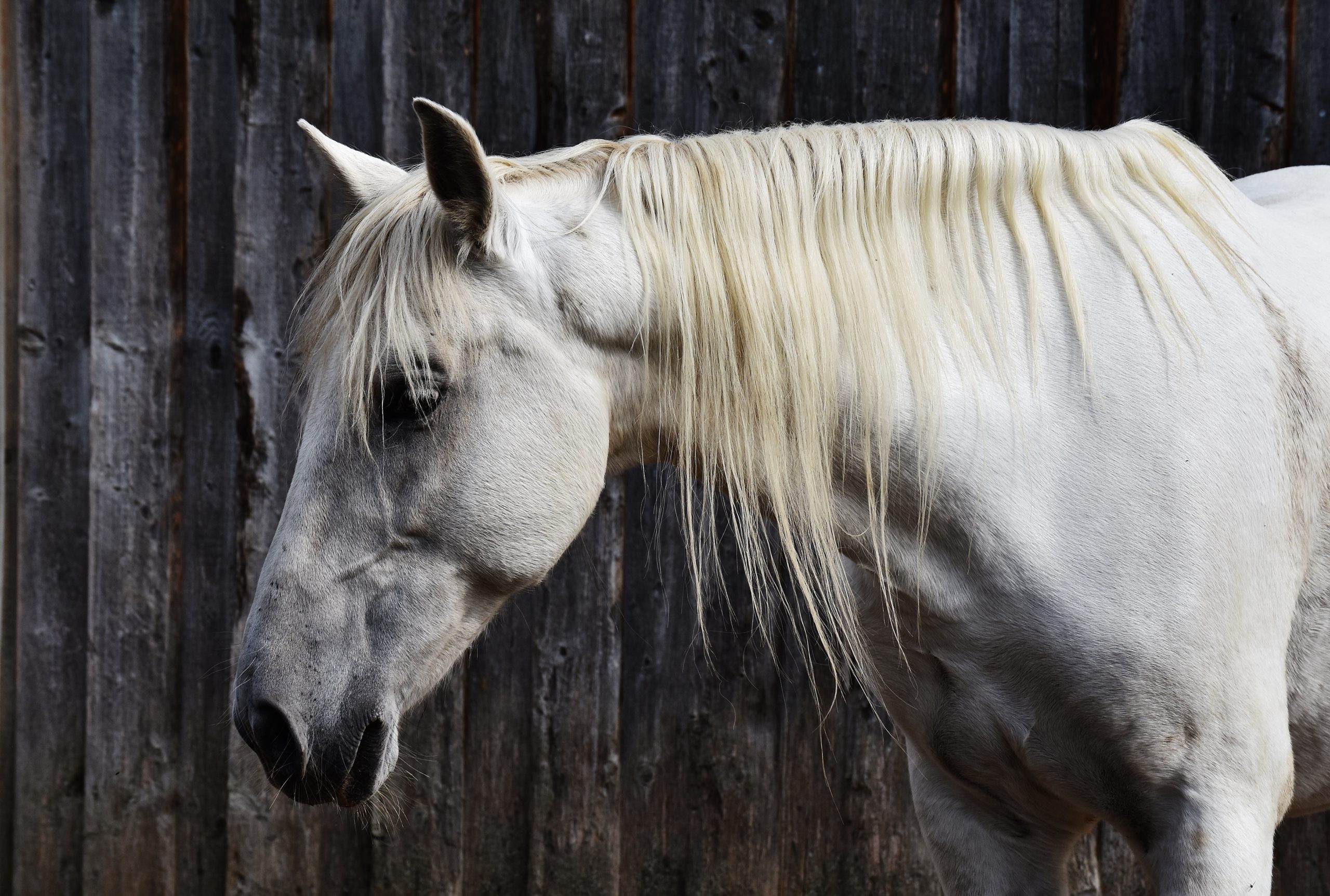Bleeding from one or both nostrils during or following maximal exercise is referred to as Exercise Induced Pulmonary Haemorrhage (EIPH). The old term epistaxis, meaning nose bleeding, is not a true description of exercise bleeding, as research work in the 1970’s showed that the blood originated deep in the lungs.
Incidence of EIPH
Bleeding appears to be related to the speed of exercise, with greater risk in horses exercising at maximal speed or effort. In thoroughbred or standardbred racehorses, around 90% bleed to varying degrees in the lungs, but only 2% show blood at the nostrils. The remaining 98% are ‘hidden’ bleeders without any external visible signs.
In racing horses, bleeding most commonly occurs in the final stages of the race when maximal speed and exertion occurs. The incidence does not appear to be influenced by breed, climate, location, training method, feed, or track conditions. There appears to be an increased risk with age, particularly in horses over five years of age.
Studies have shown that the majority of young thoroughbreds in training have had evidence of blood in the airways at least once by the time they are in moderate work. The incidence is increased if young horses are ‘breezed’ or pace worked hard in early training.
Cause of EIPH
There have been a number of theories to explain the underlying cause of lung capillary haemorrhage. Recent research has shown that the pulmonary (lung) artery blood pressures increase dramatically during exercise at maximal speed and effort, reaching maximum pressure of up to 150mmHg (pressure units), compared to around 40mmHg in elite human athletes and racing greyhounds.
In the horse, high blood flow rates are essential to deliver oxygen to rapidly contracting muscles. The pressures generated by this blood flow in the small, thin-walled pulmonary arteries result in rupture and ensuing haemorrhage. Once a few vessels burst, the coating of blood in the air sacs reduces surface tension, and more high pressure capillaries are likely to rupture.
Although the link between high blood pressure and pulmonary artery rupture is a theory, it has been substantiated by recent studies that the risk and extent of lung bleeding can be reduced by giving medications that reduce capillary blood pressure or strengthen the lung capillary wall structure to resist rupture.
Recognition of a ‘bleeder’
As 98% of bleeders remain ‘hidden’ with no evidence of blood at the nostrils, careful appraisal of the behaviour and performance of a horse during maximum or sustained exercise and in the immediate recovery period can lead you to suspect that it is suffering form lung bleeding. The following is a checklist of signs that link poor performance and specific behaviour to bleeding:
- History of one or more good performances, followed by loss of form in subsequent competition
- Horse unable to sustain its all out speed, losing momentum and dropping back in the home straight, or when pressed hard
- Rider or driver reports horse got its ‘tongue over the bit’, or ‘choked down’ and lost stride rhythm when pressed hard in the run to the line
- Rider or driver reports abnormal or choking sounds during all out, sustained exercise
- Horse may appear distressed and uneasy, and observed to be swallowing repeatedly within 15 – 30 minutes after a race
- History of slow recovery and reluctance to put effort into exercise for 3 – 4 days after a hard workout or race. May lack vitality, alertness and appetite for a few days after racing
- Evidence of a trickle of blood-tinged mucous from the nose, or traces of blood on the feed bin in the 24 – 36 hours following a race
Diagnosis of EIPH
If the horse has signs consistent with a severe bleed then you need to consult your vet. Passing an endoscope into the windpipe within 2 hours after a trial or race may confirm visible traces of blood in the throat, upper and lower windpipe areas. It is too late to wait until the next day to check for a suspected bleed. However, blood may not always be visible in the windpipe.
A technique called a Bronchoalveolar Lavage (BAL) or lung wash, can help to confirm the relatively severity and frequency of previous bleeds deep within the lungs. A long tube is passed down the windpipe to lodge deep within the lungs, sterile saline is then passed down the tube to wash the lung air sacs and airways, and a sample is immediately drawn back into a syringe for laboratory analysis.
A blood test taken from a horse that has a loss of performance due to repeated, severe lung bleeds, may shown an increase in bilirubin bile pigment readings and a reduced red cell count, indicating a possible loss and breakdown of red cells. A BAL lung wash can help confirm evidence of chronic EIPH in this case.
Management of EIPH
It is virtually impossible to prevent EIPH completely in a high performance horse. Early recognition of bleeding, as evidenced by loss of performance, history of choking down or fading under maximal exercise, is vital for the best results in reducing it severity by management and medication.
Horses that show blood at the nostrils, or are confirmed by scooping or BAL lung wash to be severe hidden bleeders, should be given 2 – 3 months rest before returning to training to avoid permanent lung damage and a greatly increased risk of future bleeds.
Management of EIPH includes:
- Veterinary treatment of any other respiratory problem including infections, airway reactions, allergies or throat abnormalities is very important, as bleeding often occurs subsequent to other airway diseases. Your vet may recommend administration of human metered dose inhalers and antibiotics via an Equine Aeromask. Oral bronchodilating agents may also be prescribed.
- Reduction of airborne dust to decrease the risk or airway reaction and allergy. Dampen dusty feed, including chaff and hay, or if vegetable oil is used as the energy source it will help reduce dust when mixed well into the feed.
- Selection and maintenance of dust-free bedding, such as course sawdust, shredded paper, rice hulls, or wood shavings. Dampen dusty bedding with a fine mist spray and mix newly added top-up bedding well into existing bedding.
- Working the horse out of line to the previous horse on dusty tracks or arena surfaces
- Warming-up a ‘bleeder’ for 7 – 10 minutes before hard or fast work on cold mornings, and if possible work last when the air is warmer.
- Avoiding swimming of known or suspected bleeders, particularly a horse that swims ‘hard’
- Avoiding maximal, sustained effort and blood pressure peaks in training by working at ¾ pace with short hit-outs over 300 – 400m 2 or 3 times a week, once the horse is conditioned for fast work.
Medication for ‘bleeders’
Medications that reduce blood pressure peaks, or strengthen the artery walls have practical benefit in treating bleeders. Although there have been a number of medications claimed to have benefit in reducing the risk of EIPH, only one has been proven to be of benefit by exhaustive scientific studies. Frusemide is a diuretic drug that has some success, possibly by reducing lung tissue fluid and blood pressure, but due to its long withdrawal time prior to racing and competition it has no benefit on race day when recurrence of EIPH is most likely.
Although a number of nutritional bleeder treatments based on Vitamin A, Vitamin E, K, rutin, Vitamin C and herbal mixtures are available, controlled studies have not been carried out to evaluate their benefit in reducing the severity of bleeding.





